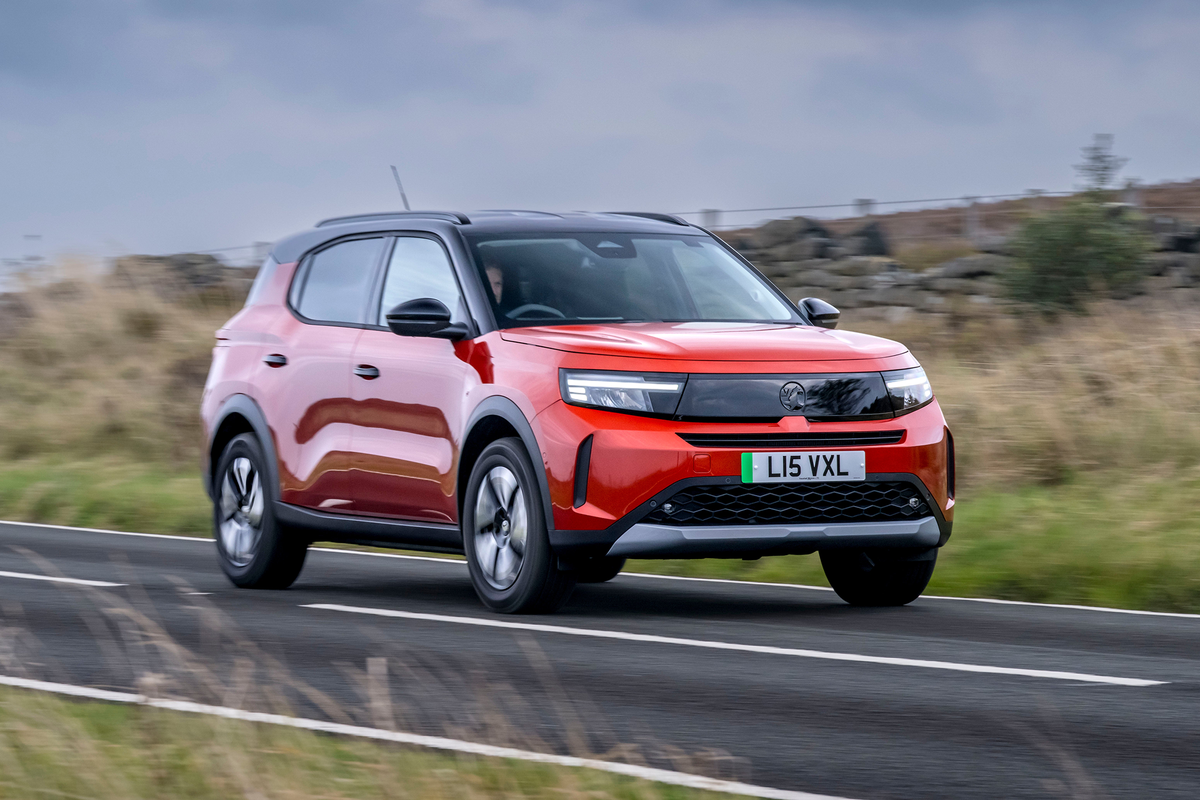
Using an old name for a new car is always tricky – as Ford has found following the reaction to the new Ford Capri. So there were a few sharp intakes of breath when news broke of the Vauxhall Frontera name returning. The original Frontera was quite possibly the worst car Vauxhall has ever sold.
However, the Frontera is back – but this time it’s electric and now playing the role of a rather good, affordable, family-friendly SUV. The new Vauxhall Frontera slots into the electric car world with a price and package that will appeal to those after something practical, stylish and straightforward for everyday use.
Available with two battery sizes – 44kWh or 54kWh – and with hybrid power (which adds the option of seven seats for an extra £550) for those not ready to go fully electric, the Frontera covers a lot of bases. I’ve driven the smaller 44kWh version, which is expected to be the volume seller thanks to its attractive pricing that undercuts its hybrid equivalent by £2,360, thanks in no small part to the government’s Electric Car Grant.
On the road, the Frontera’s ride is a touch firm – not really uncomfortable, but just a bit jiggly, especially compared with its Citroën e-C3 Aircross sibling that shares the same underpinnings. But it’s easy to drive, quiet (apart from a faint motor whistle when accelerating), and perfect for short commutes, school runs or town driving. Rear seat space is excellent and the boot is practical and well shaped, with a low lip that makes it easy to load everything from your weekly shopping to a family dog.
There’s a bit too much hard plastic in the cabin, and it misses the fabric touches that make the Citroën feel more homely, but tech levels are strong for the money – with twin 10in screens, wireless Apple CarPlay and Android Auto, and proper physical controls for ventilation. Best of all, Vauxhall has also added shortcut buttons to turn off the overly zealous driver aids, so those incessant bongs and nudges can be silenced quickly.
The Frontera might not wow you with power or luxury, but it’s a proper no-nonsense EV – and one of the most sensible choices for families looking to make the electric switch without blowing the budget. The only problem it has is that the Citroen equivalent is £900 cheaper, rides better and has a slightly plusher cabin.
How we tested
I drove the Frontera around around the towns and villages of Wiltshire, on narrow and dirty country lanes, through surburban streets and on faster A-roads and dual carriageways. As well as being able to assess how well the Frontera drives, I took it to Waitrose to see how easy it was to park, checked the boot for ease of loading, sat in the back and worked out how I could fit a child seat and gave all the tech - including the stereo - a thorough going over.
Vauxhall Frontera: £22,495 to £29,195, Vauxhall.co.uk
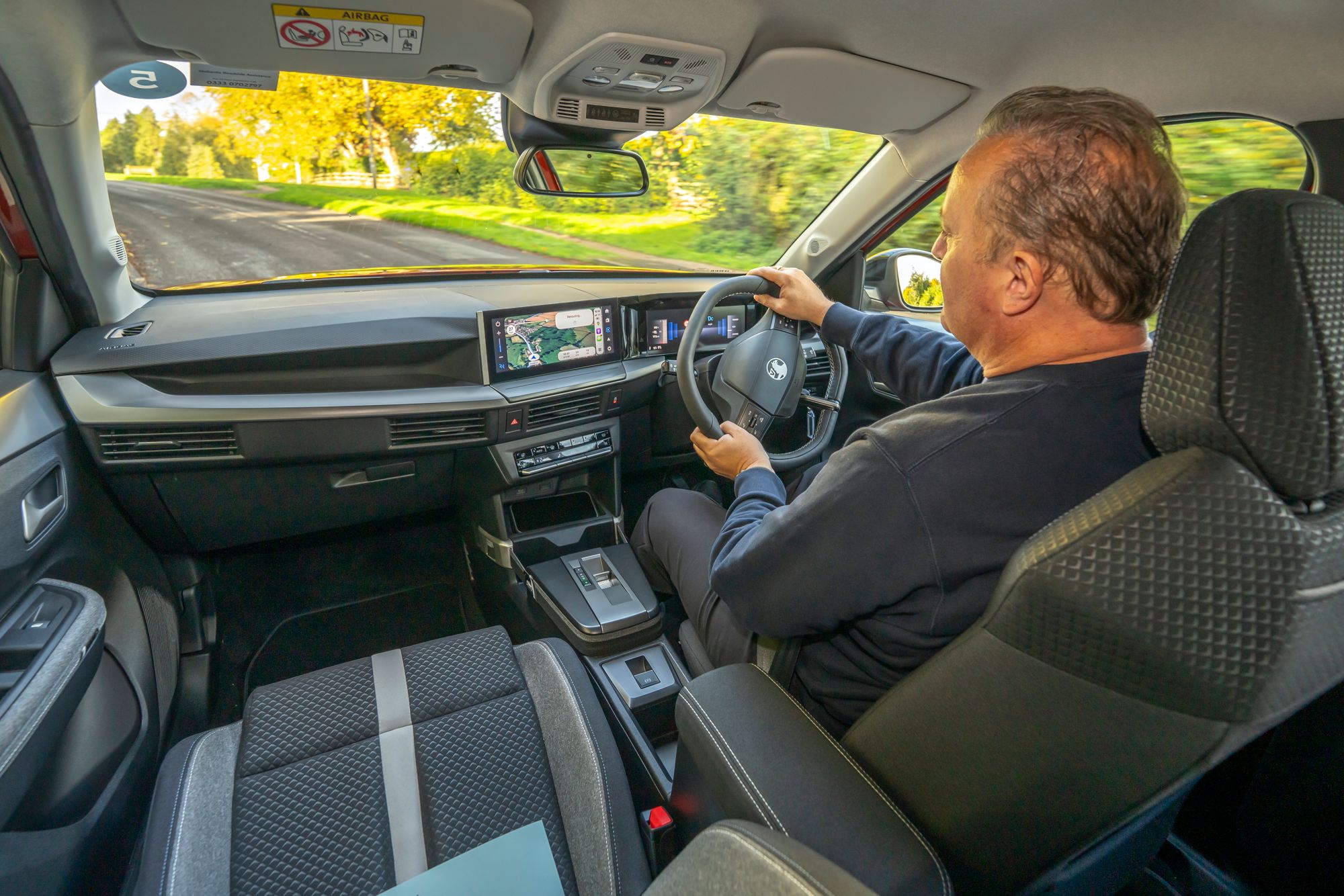
Independent rating: 8/10
- Pros Lots of space, cheaper than petrol equivalent, plenty of kit
- Cons Firm ride, plasticky interior, limited range
Vauxhall Frontera specs
- Price: £22,495 to £29,195
- Battery size: 44kWh or 54kWh
- Maximum claimed range: 253 miles
- Miles per kWh: 3.9
- Maximum charging rate: 100kW
Battery, range, charging, performance and drive
Two battery options are available in the all-electric Frontera: a smaller 44kWh pack and a larger 54kWh version offering a claimed 186 miles for the smaller battery or a 253-mile range for the larger one. Both versions use the same 113hp electric motor driving the front wheels, and both support up to 100kW DC rapid charging and 11kW AC home charging. That means a 20 to 80 per cent top-up on a fast charger should take around 26 minutes – fine for quick pit stops on longer journeys.
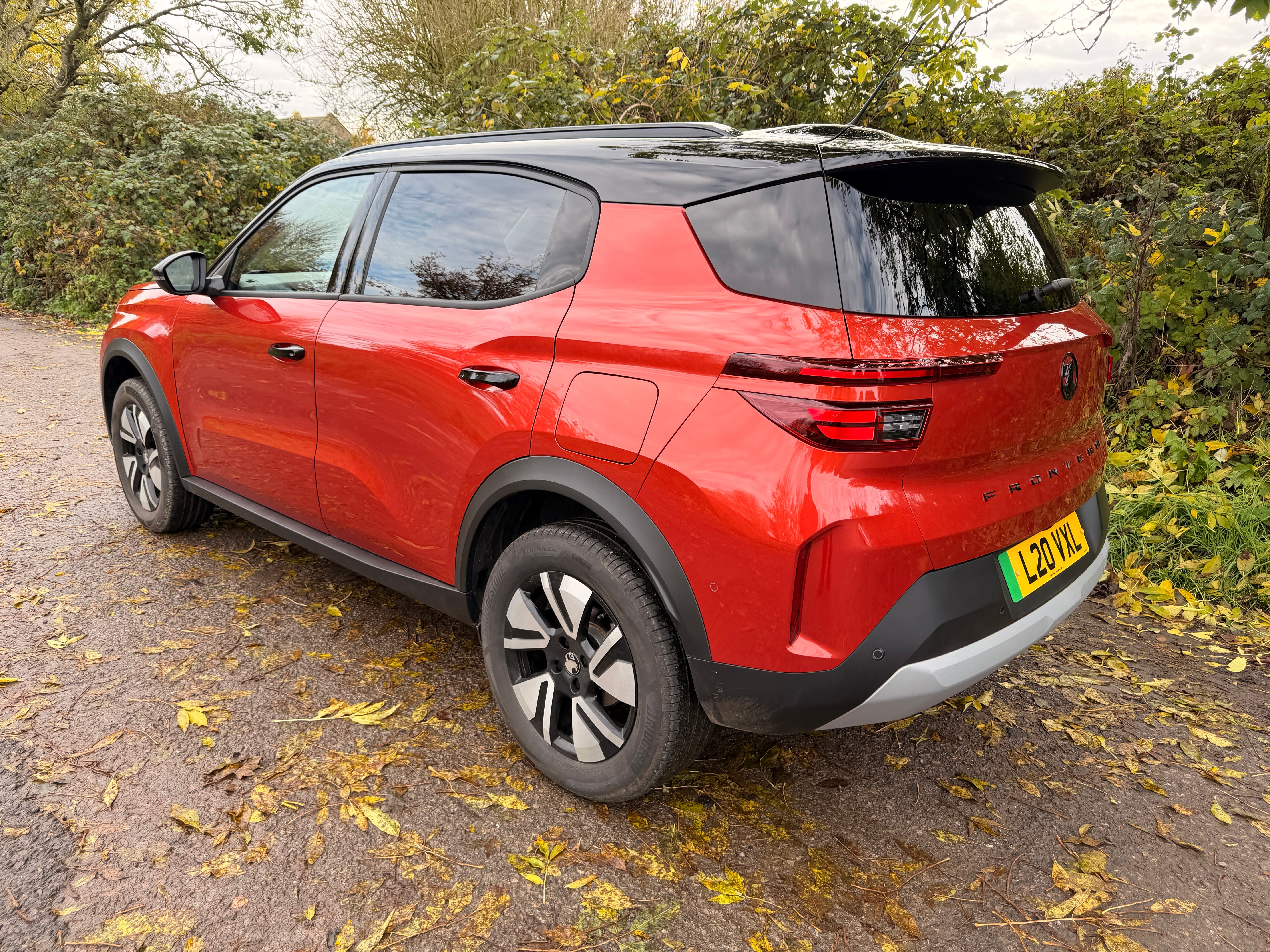
In the real world, especially with the 44kWh model, you’ll be looking at nearer 150 to 180 miles of range depending on the weather, passengers and driving style. That’s perfectly adequate for daily duties and occasional longer trips with a bit of planning.
The driving experience is generally pleasant, though the car can fidget over lumps and bumps at low speeds. It’s not harsh, but don’t expect Citroën-style floatiness. Vauxhall says it’s a little sportier – we’d just call it firmer. The steering is set up for ease of use rather than feedback, which works perfectly in the Waitrose car park I visited.
Acceleration is modest, but adequate – the electric motor delivers its 111bhp and 125Nm of torque smoothly, with a faint whistle that’s only noticeable when the stereo is off. There’s no one-pedal driving, but you do get a choice of regen levels, with a ‘C’ button (for Comfort) that bizarrely eases off the regenerative braking – having a ‘B’ button to add braking effort would be more usual.
It’s not a car that will thrill you behind the wheel, but for nipping through town or cruising at 60mph, it’s as easy-going as they come.
Interior, practicality and boot space
Inside, the Frontera is functional and surprisingly roomy. Those in the back get acres of space – especially legroom – making it a real winner for family duties or taller teens – it’s exactly the same length as the Citroen e-C3 Aircross, so has pretty much identical rear space. Visibility is good, parking is a breeze, and the boot is sensibly shaped with a low sill that makes chucking in shopping or a pushchair no problem at all.
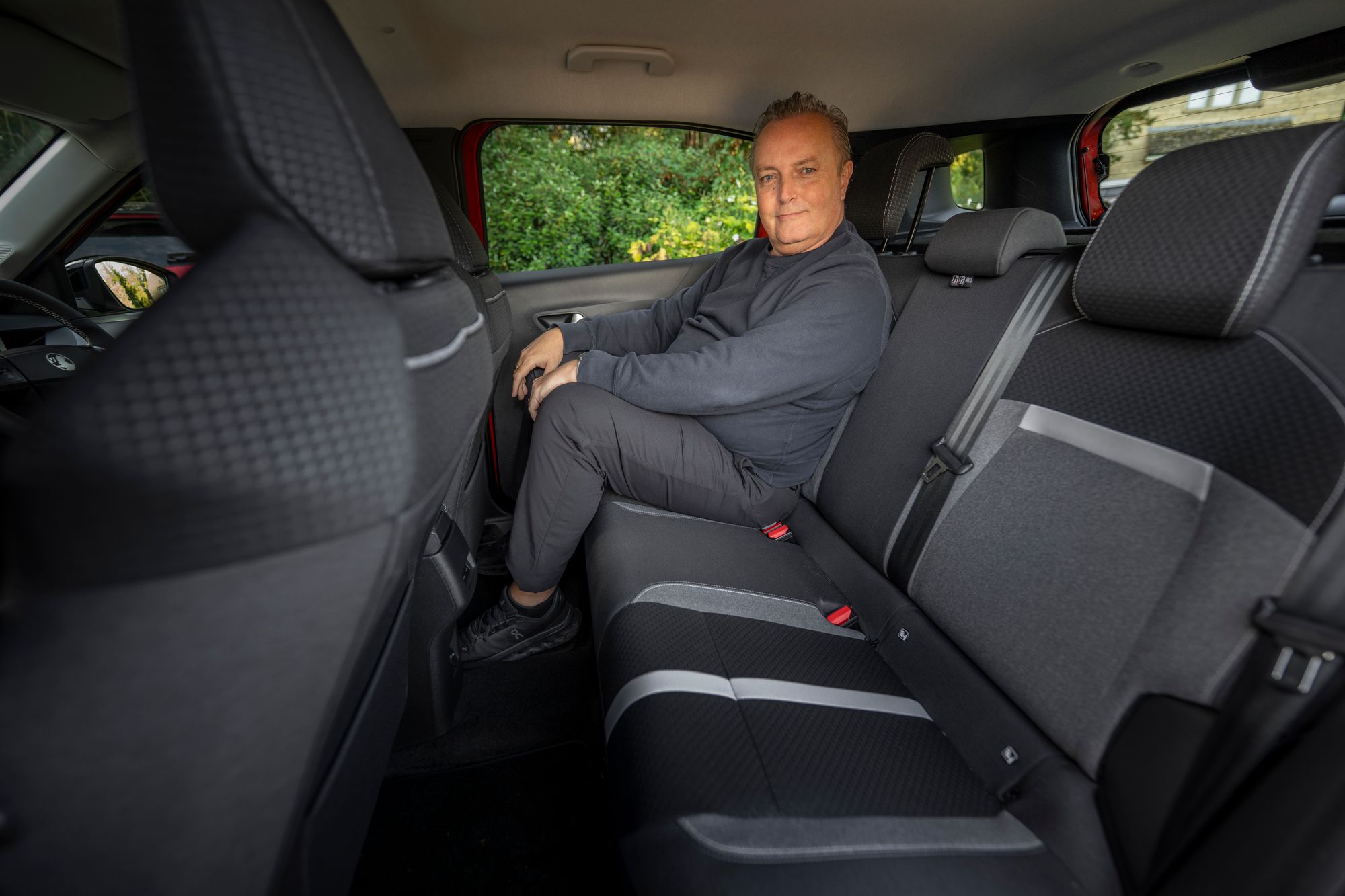
Boot capacity stands at 460 litres with the seats up and up to 1,600 litres with them folded. There’s also a two-level load floor and a 60:40 rear seat split, plus roof rails rated for up to 240kg.
Cabin quality is very much of the “built to a budget” school. There’s lots of hard plastic, and none of the warm fabric trim you’ll find in the Citroën equivalent. Still, it’s solid enough, and you do get some practical touches – like rubberised trays and elastic cupholder bands to stop rattles (though ironically, our test car had a few of those elsewhere in the cabin).
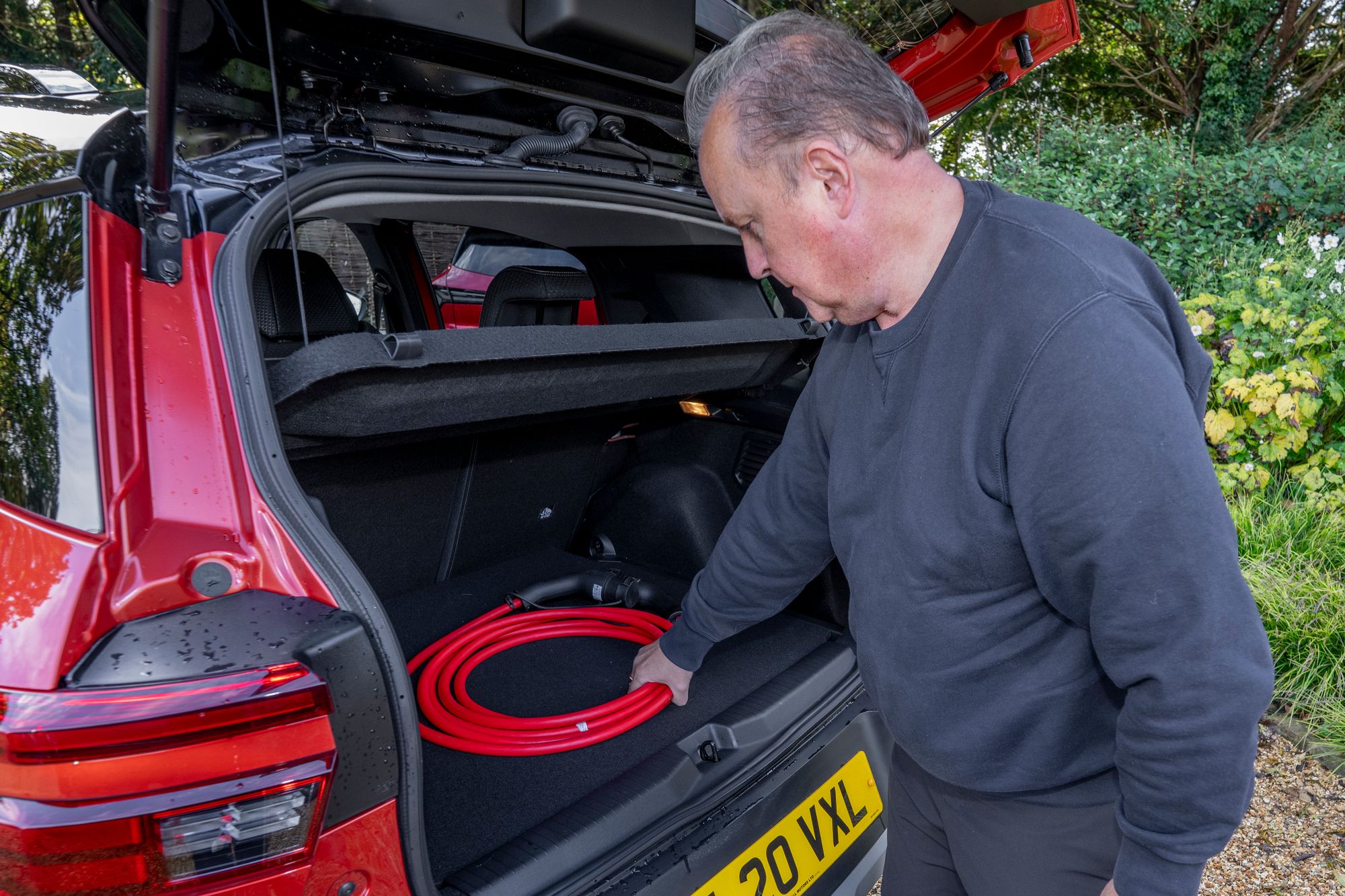
The seats in this GS model come with Vauxhall’s Intelli-Seat system, claimed to offer better comfort on longer trips. They’re supportive enough, and the driving position is fine, if a little high for some tastes.
You’re not short on storage, either – there are cubbies and shelves dotted about, including a handy rubberised shelf in front of the front passenger, plus up to five USB sockets depending on trim. The boot lip is low, wide and perfect for families with dogs or pushchairs.
Technology, stereo and infotainment
The Frontera may be budget-conscious, but it doesn’t skimp on tech. Even the base model gets a 10-inch touchscreen and a 10-inch digital driver display, complete with built-in sat-nav, wireless phone mirroring, natural voice control and wireless charging.
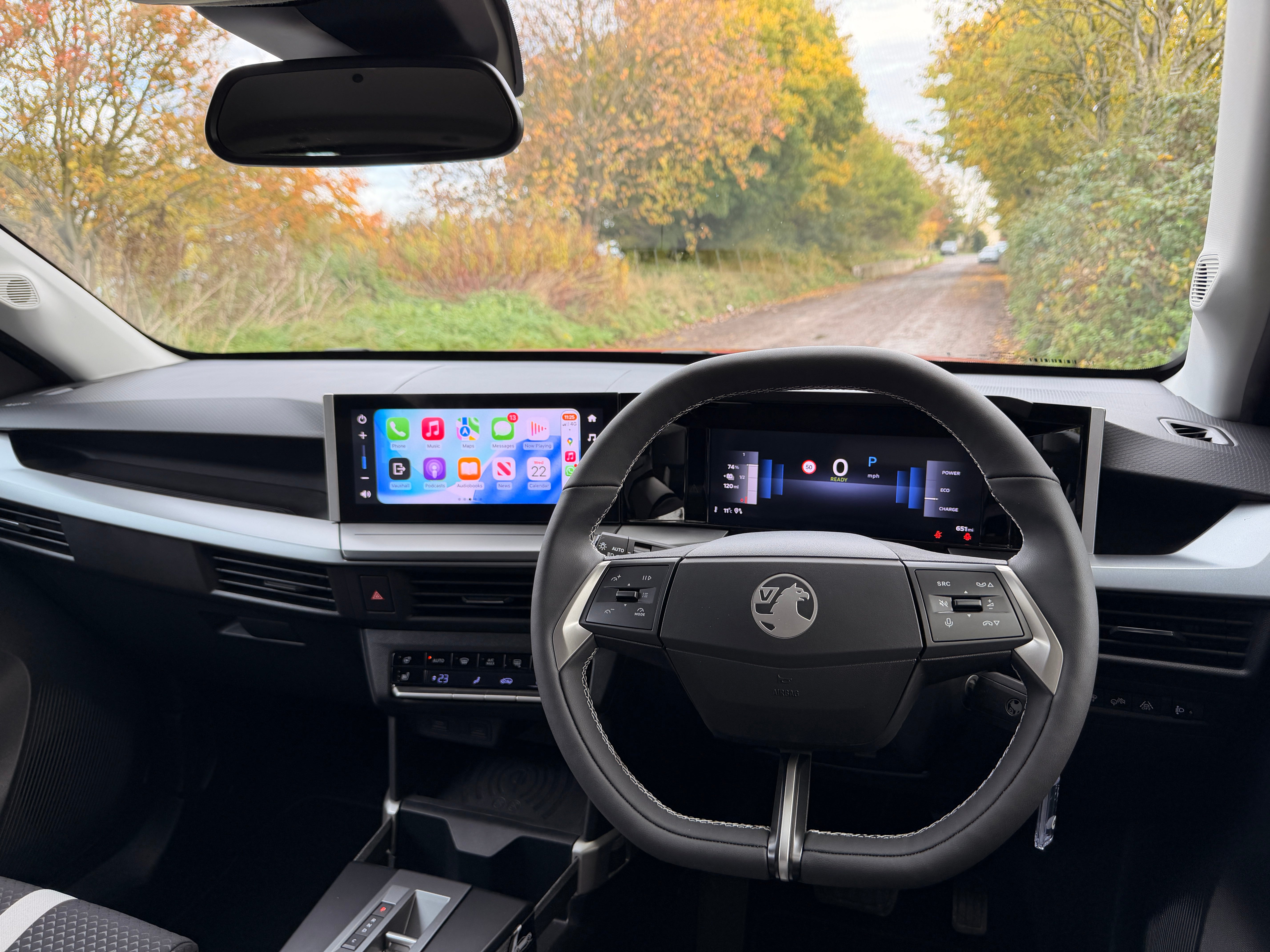
It’s all easy enough to use, and Vauxhall has wisely resisted the urge to bury climate controls in sub-menus – you get proper physical switches, which we love. There’s also a handy ‘quick select’ button to deactivate driver assistance systems like lane-keep assist and speed limit warnings, which can otherwise get a bit over enthusiastic.
Audio quality is decent for the money – nothing fancy, but good enough for podcasts and the occasional Taylor Swift playlist on the school run. If you want more kit, moving from Design (which is already decently kitted out) through GS and up to Ultimate adds niceties such as heated seats, a heated windscreen and even a lounge mode with seat recline – nice touches for what is still a very affordable EV, although the bigger battery car in top spec Ultimate trim gets a bit too close to more talented SUV rivals.
Prices and running costs
The Frontera starts from just £22,495 (with the £1,500 Electric Car Grant factored in) for the 44kWh Design trim, rising to £29,565 for the Ultimate 54kWh version with all the kit. Needless to say, it makes most sense in the cheaper models – you start stepping on the toes of the likes of the MG S5 with the more expensive Fronteras, and I’d much rather have the MG at that price.
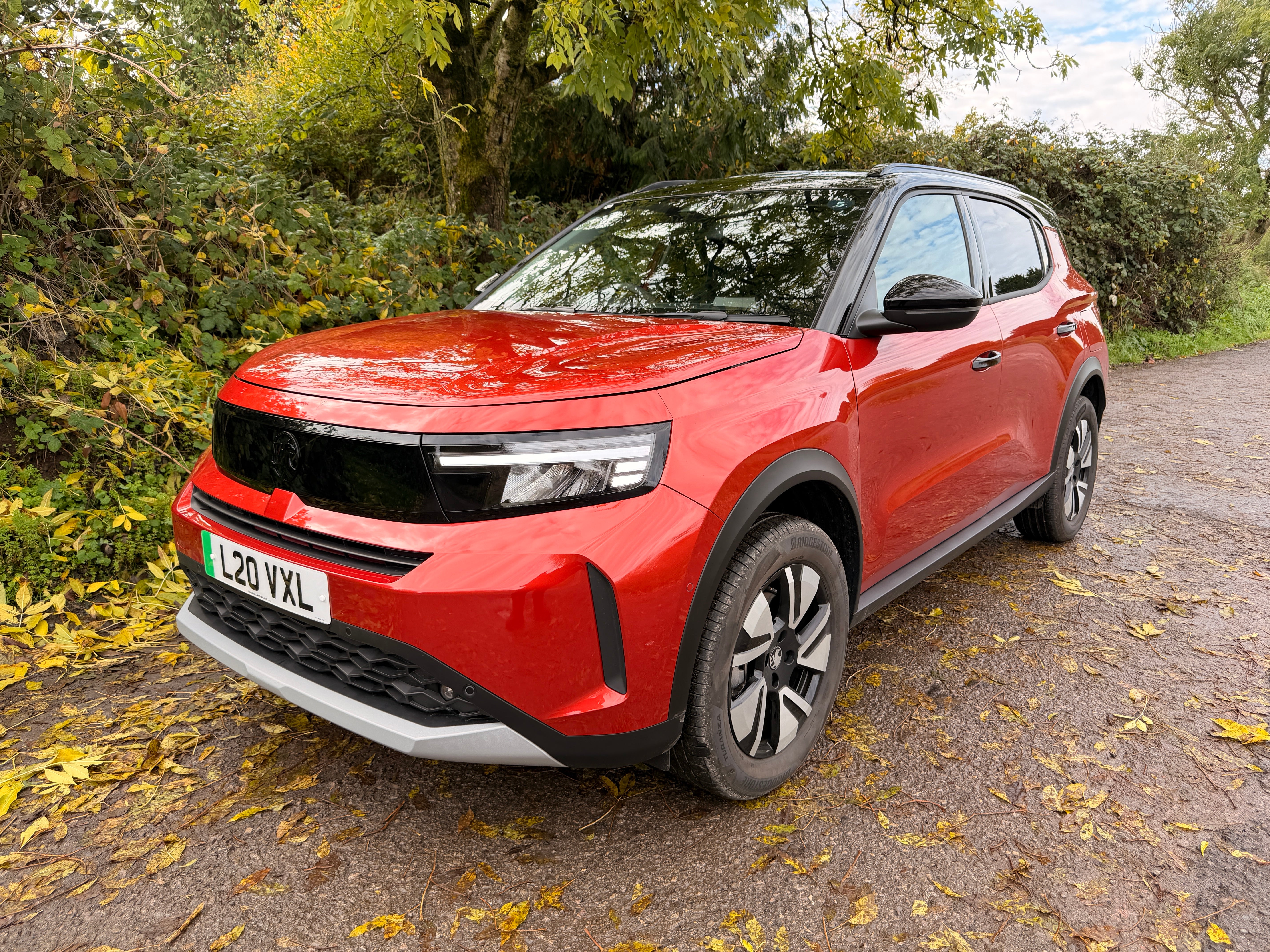
Running costs are where the Frontera makes most sense. On a cheap home energy tariff, expect to pay significantly less to run than a petrol SUV of the same size.
Benefit-in-Kind tax rates for company car drivers are low, and insurance groups should be competitive, though Vauxhall hasn’t confirmed final numbers yet.
Vauxhall also throws in an 8-year roadside charging assist plan, and is offering £500 contributions toward public charging or a home wallbox, plus up to 10,000 free miles through Octopus Energy, or you can have £500 Tesco credit or 50,000 Tesco Clubcard points – Vauxhall clearly knows its target market.
Vauxhall Frontera rivals
FAQs
How long does it take to charge?
Around 26 minutes to go from 20 to 80% on a 100kW charger. A full home charge takes around 6 hours with an 11kW wallbox.
How much does it cost - is it worth it?
Prices range from £22,495 to £29,195, with the cheaper, smaller battery models making the most sense. But the Citroen e-C3 is cheaper and marginally better
Does Vauxhall replace batteries for free?
Yes – there’s eight years’ cover for the battery and eight years’ roadside charge assist is included.
Why trust us
Our team of motoring experts have decades of experience driving, reviewing and reporting on the latest EV cars, and our verdicts are reached with every kind of driver in mind. We thoroughly test drive every car we recommend, so you can be sure our verdicts are honest, unbiased and authentic.
The verdict: Vauxhall Frontera
If you’re after an affordable, stylish and sensible electric SUV that’s ideal for everyday life, the new Vauxhall Frontera is well worth a look. It’s not plush, powerful or particularly premium – but it’s practical, well-equipped and cheaper than many rivals… except for its Stellantis stablemate, the Citroen e-C3 Aircross, which I’d say is better to drive and live with, and slightly cheaper, too.
Tesla Model Y Performance review: The best Tesla yet is an SUV supercar slayer
Tesla Model 3 vs Polestar 4 vs Kia EV6 – which EV is best?
From Abbey Road to your road – how Polestar squeezed The Beatles’ legendary studio into a car
Volvo EX90 review: Impressive but pricey seven-seat electric SUV
Will.i.am just invented an AI-powered car radio – and I’ve tried it
Best family electric cars 2025: Practical seven seater EVs tested
Think electric cars are expensive? My new EV costs me less than a couple of posh coffees a day
Step one in Audi’s big comeback? Killing off over 100 steering wheels







